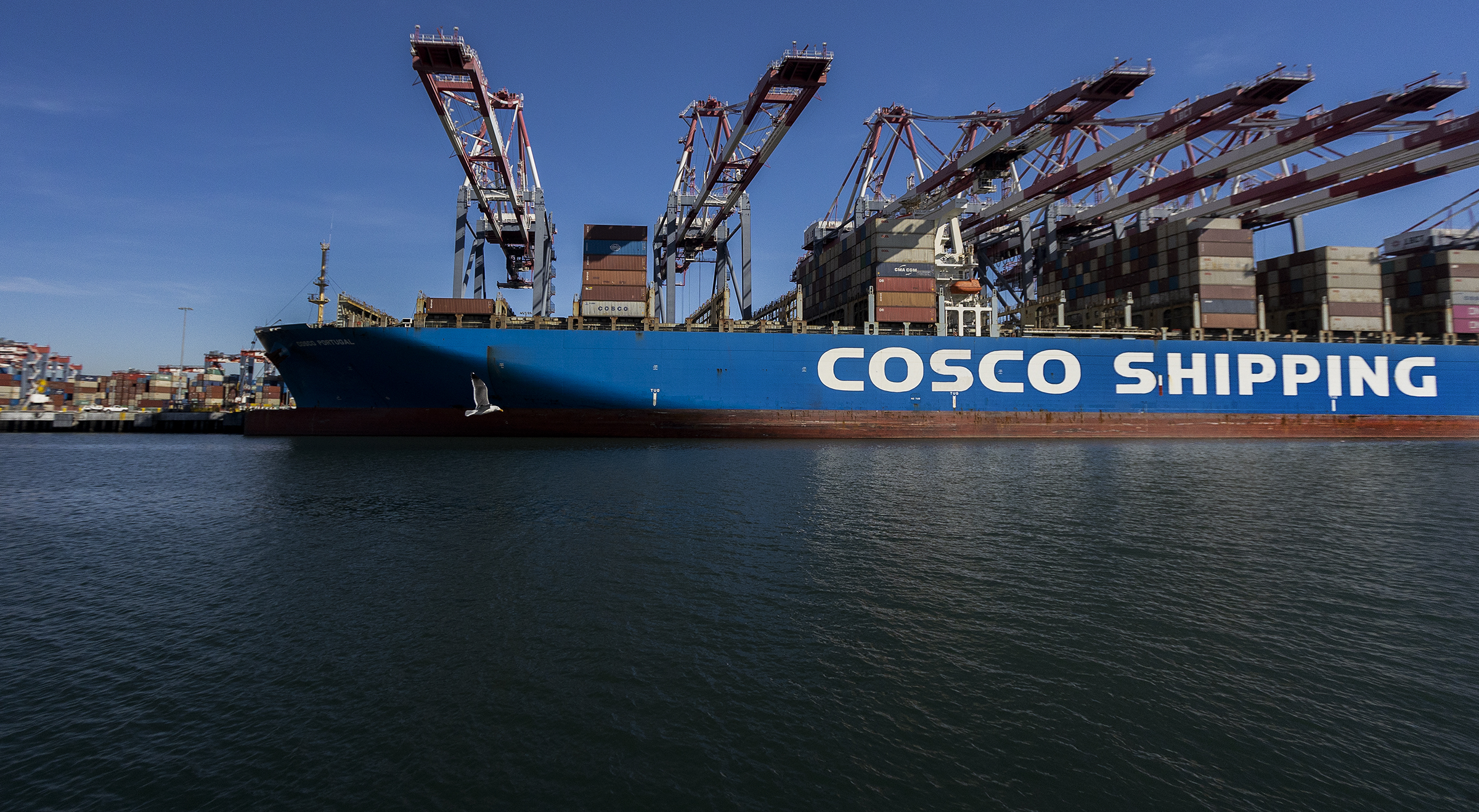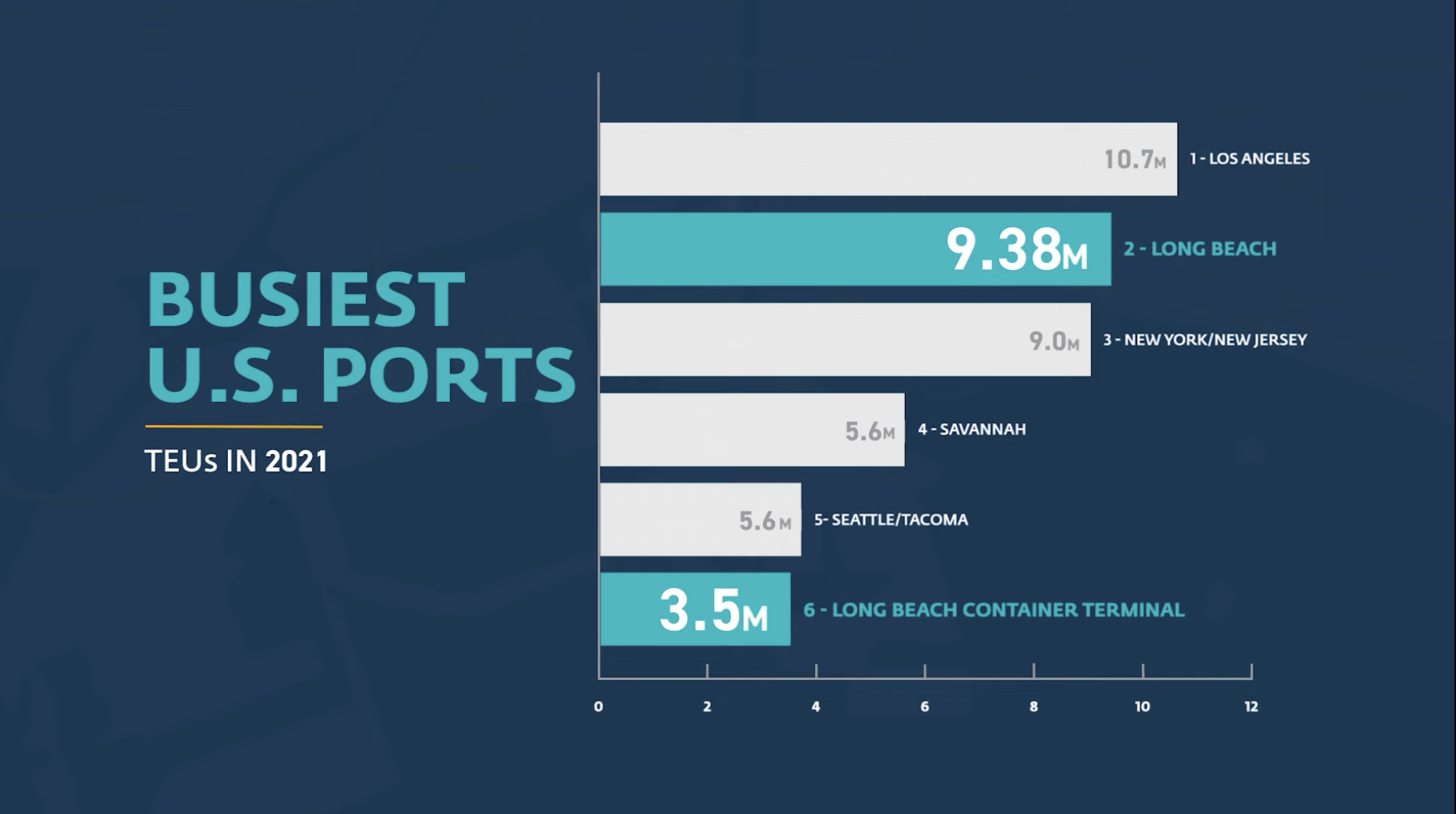
The only way to combat the ongoing supply chain crisis is through systemic overhaul of the industry, including leveraging new technology, growing the labor force and strengthening infrastructure, Port of Long Beach Executive Director Mario Cordero said Wednesday during his annual State of the Port address.
During the virtual event, Cordero and a host of others—including Mayor Robert Garcia, ILWU Local 13 President Ramon Ponce de Leon, Board of Harbor Commissioners President Steven Neal and more—praised dockworkers, truckers and others critical to the supply chain personnel. However, change is desperately needed, Cordero said.
“We continue to debate the same issues year after year, while the operational model remains status quo—never changing,” Cordero said. “The test is not in how many containers we move but in how we transform and build a port that benefits everyone.”
“This needs to be a year of transformation,” Cordero added.
Increased partnerships among supply chain stakeholders, improved infrastructure, new technology and a larger and well-trained workforce are crucial to what Cordero said is the ultimate necessary change to the local industry: 24/7 operations. Cordero noted that the San Pedro Bay ports’ largest trade partner, China, already operates around the clock.
“There are 168 hours in a week and, for the most part, our terminals are open less than half of those hours,” Cordero said.
The ports of Long Beach and Los Angeles already have begun examining the transition to 24/7 operations. In Long Beach, Total Terminal International at Pier T expanded hours last year, but the model requires every level of the supply chain to participate, from terminals to transportation to warehouses. The Pier T terminal still does not operate 24/7.
In recent months, a slew of elected and appointed officials have visited the San Pedro Bay ports, including Transportation Secretary Pete Buttigieg, Gov. Gavin Newsom, and multiple senators. Officials toured the facilities to see the operations for themselves and to hear about the issues facing the supply chain.
“We have all heard so much about the supply chain backlog, but what is actually happening is that our dockworkers are moving more cargo than ever—and doing so during a pandemic,” Neal said. “We are building a bright future for the Port of Long Beach, the goods movement industry, and for the community.”
Last year, the port processed 9.38 million 20-foot equivalent units (the standard measure of a shipping container), marking a 15.7% increase from the 8.11 million TEUs moved in 2020, which was a record-setting year.
Cordero highlighted several programs and projects aimed at improving the local supply chain, which is the largest in the country. The port is gearing up for a soft launch of its data-sharing tool that will better connect stakeholders. The “Supply Chain Information Highway” is expected to launch later this month, Cordero said.
An influx of funding is needed to meet demands for straining infrastructure, Cordero said, noting the Biden administration’s historic infrastructure bill that includes $17 billion for the nation’s ports. Cordero also highlighted more than $52 million in state funding for the port’s massive Pier B On-Dock Rail Support Facility that is in the final planning stages.
Last month, Newsom unveiled his proposed budget, which included $110 million for an innovative goods movement training center that will be centrally located within the San Pedro Bay port complex.
“We believe we have a responsibility to nurture the supply chain workforce for tomorrow, with a special focus on students from neighborhoods nearest the port,” Neal said, adding that the port recently expanded its partnership with Long Beach Unified School District to create a new supply chain-related program at Jordan High School last year.
“I have no doubt that we can handle whatever comes our way,” Neal added.
Through their various efforts, the ports have made progress in alleviating congestion. There were 78 container ships waiting to dock at one of the San Pedro Bay ports as of Wednesday, down from a high of 105 only a few weeks ago.
“Let us recognize our success,” Cordero said. “But let us recognize this port does not want to accept the status quo.”
Cordero reaffirmed the port’s dedication to protecting the environment. Aside from increased rail, which will significantly reduce the number of trucks on the road, the port has plans to transition the drayage truck fleet to zero-emission vehicles by 2035, a move that will be funded through the Clean Truck Fund rate, the collection of which is set to begin in April.

The port also has significantly increased its usage of electric terminal equipment, including at the recently completed Long Beach Container Terminal. The new terminal, which would be the nation’s sixth largest port on its own, uses almost exclusively zero-emission equipment, including 14 of the world’s most modern ship-to-shore cranes, Cordero said.
The port already has met all of its 2023 emission reduction targets, Cordero said, which are outlined in the Clean Air Action Plan, a joint environmental effort with the Port of Los Angeles.
“Almost two decades ago, [we] launched a green revolution that spread through seaports worldwide,” Cordero said, referring to the CAAP, which was first adopted in 2006. “We’re proud to be a global leader in reducing harmful air emissions, improving water quality, protecting marine life and implementing sustainable practices.”
